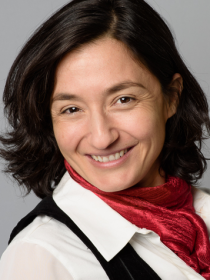Maria Antonietta Loi | |
|---|---|
 | |
| Born | May 4, 1973 |
| Alma mater | University of Cagliari |
| Scientific career | |
| Institutions | Italian National Research Council Johannes Kepler University Linz |
Maria Antonietta Loi (born 4 May 1973) is an Italian physicist who is a Professor of Optoelectronics at the University of Groningen and member of the Zernike Institute for Advanced Materials. Her research considers the development of functional materials for low-cost, high efficiency optoelectronic device. She was awarded the 2018 Netherlands Physical Society Physics prize (Physicaprijs). In 2020, she was elected Fellow of the American Physical Society. In 2022 she became a member of the Royal Netherlands Academy of Arts and Sciences (KNAW) and of the European academy of Science (EurASc). Loi is Editor-in-chief of Applied Physics Letters .